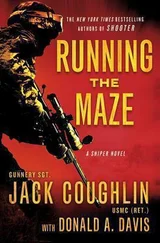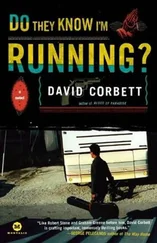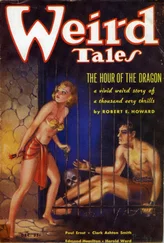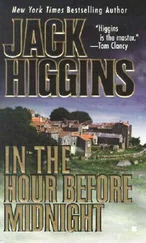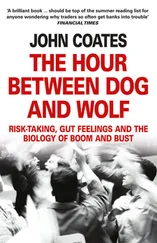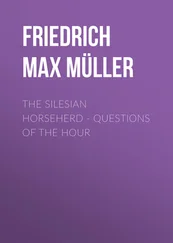Ashley runs his hands along the indentations. Behind him Imogen draws a pocketknife from her bag and unfolds the blade. Ashley had not seen the knife until now.
— You’re damned theatrical, he says. You shan’t carve in that.
— It’s for you, Ashley.
— You’re joking.
Imogen shakes her head. — They were told they were Christ’s own army and still they stopped to carve these crosses, so that they would return.
— You’re mad. You shan’t carve in that.
— I want you to do it. Don’t you see, Ashley? It’s because they didn’t give a damn for God or heaven. They wished to see their wives and homes again. They wanted to drink and stay out all night as we have. That was why they carved. That they would come back.
— I can’t do that.
— I will do it for you, Imogen says, if you will not.
She drags another chair across the stone floor and rests it beside his. Imogen steps on the chair and plunges the knife into the beam, and with both hands she hacks up and down against the grain.
— Imogen, Ashley pleads. For God’s sake, it’s historical—
— We are bloody history!
She jerks the knife back and forth across the wood to make the horizontal bar of the cross. For a moment Imogen pauses and there is only the quick panting of her breath. Ashley puts his hand on the thin ivory knife handle. They begin to carve together, slowly at first, then with real effort.
— You’ll come back, she says. I can’t have been given you only to lose you so quickly.
Ashley takes his hand off the knife. He looks at Imogen.
— The war can’t last forever. They’re making a big push, I could be home by spring. We’ll go straight to the Valais and watch the snow melt down the mountains—
Imogen says nothing. She makes a few careful marks to finish the carving, fluting the ends of each cross. Then she lifts the candle closer to the beam to inspect her work. She blows the shavings from the carving and cleans the hollows with the blade.
Ashley grins. — You know, most of these fellows probably never came back.
Imogen refolds the pocketknife.
— It occurred to me. But you could be a better sport.
— Don’t be cross. I was a good sport.
They step down and Ashley replaces the chairs. Imogen stands in the doorway holding the candle. She looks away from the flame, her expression clouded.
— By the way, Ashley asks, how did you know the door would be open? Was that destiny again?
Imogen blows out the candle.
— No, she says. I bribed the sexton.

On their way back to Stockholm Karin and Christian drop me off at Arlanda Airport. I visit the ticket counter of several airlines, where I learn that the next flight to Paris costs nearly two hundred euros, far more than I ought to spend. Before I left California I transferred all of my savings into an account I could draw from in Europe; it added up to only $1,800 and I’ll have to make it last. But the flight leaves soon and I can’t waste time staying in Stockholm. I buy the ticket.
A few hours later I’m underground in the Paris métro, following dense crowds through tunnels of glazed white tile. Even after studying the system map for several minutes, I get on the wrong train at Opéra and don’t realize my mistake for a few stops. I switch trains at Bonne Nouvelle and take a seat, trying to steady my hand as I write in my notebook, the train bumping on into the night.
QUESTIONS
1. Who is M. Broginart?
2. What was in the larger picture and what happened to it?
My hostel lies on a quiet street in the Fifteenth Arrondissement. The lobby is also the bar and it seems like half the guests are drinking here tonight. I check in with the bartender. He hands me the key to my bunkroom and a slick visitors’ map of the city printed by Galeries Lafayette.
I sit on my bunk and unfold the map, my eyes following the sweep of the Seine around the city, the two islands in the center, the Left Bank where the boulevard Saint-Germain meets the boulevard Saint-Michel. All my life I’ve wanted to come to Paris. I think of the years of French classes, the suitcase full of yellowed Gallimard paperbacks in my father’s garage. I fold up the map and go to the hostel’s computer beside the bar.
For the next two hours I look up libraries and archives. By the end of the night I have seven places marked in ink on my map. The bartender winks at the girls sitting beside me.
— Look at this guy. Just got into town, he’s already mapped out which bars he’s hitting. Where are you going first?
— The Bibliothèque Nationale.

I start early the next morning, but Broginart is not an easy man to trace. There’s nothing on him at the Bibliothèque Nationale: not in the catalogs or the digital library, nor in any of the dozens of books I call up on prominent Parisian collectors. At the Bibliothèque Sainte-Geneviève I spend hours under its soaring cast-iron columns, paging through gallery catalogs, reading the letters of painters and sculptors from the 1910s and 1920s. Broginart’s name appears nowhere. I move on to the specialist libraries, the Bibliothèque Kandinsky at the Pompidou Center, the Médiathèque of the École des Beaux-Arts. After four days of research I know the names of the famous Paris galleries, the collectors who bought their paintings, the major salons and exhibitions. I know nothing about Broginart.
The nights go better than the days. At six o’clock each evening I leave the libraries and buy a bottle of wine or beer from the nearest grocery, walking the streets until I don’t worry anymore, until I can’t think about anything but the city itself.
Because I love everything in Paris. The enamel green color of the water fountains. The brown fold-up seats on the subway cars that the accordion players sit on, old men in fraying pin-striped suits who play to no one but me, the melody coming in and out as the train crosses the Seine at Austerlitz. The cups of café allongé I drink on the café terrace each morning, one euro and twenty cents.
My third night I’m in the Jardin du Luxembourg at dusk and a short man approaches me with a friendly smile. He tells me his name is Mohammed and he’s a native of Casablanca. He wears a dirty sweater, blue jeans and white basketball shoes with no laces. We talk in French and English. Mohammed knows the best places to sleep on the riverbank and where to get the best couscous in Paris for three euros a plate, but only on Sundays.
— You will be the only British there, Mohammed says. But if you come with me, it’s no problem.
— I’m American.
Mohammed nods sagely. — Et qu’est-ce que tu fais à Paris?
— Je cherche un tableau de l’artiste Eleanor Grafton . Let me know if you see it—
— You can go to Le Louvre, Mohammed says. There are thousands of paintings there. Tonight is Wednesday, it’s open late. And it’s always warm and dry inside.
I walk through the backstreets of Odéon to the Louvre. Everywhere in the museum I imagine Eleanor’s painting, even though I don’t know what it looks like. In the rows of gilded frames in the Denon wing, it’s always at the end of the hallway, the last picture in the gallery. Because I see Imogen everywhere here. In the cold stare of the Grande Odalisque , or underground in the shadowed brickwork of the Medieval Louvre; in the gallery for the blind beneath the stairs where you’re allowed to feel the statues, to recognize faces by the contours of their features, the hard lines of the nose and chin. Even the dark-haired girl standing before me in line at the museum café. She might look just like her, but I’d never know it.
Читать дальше


